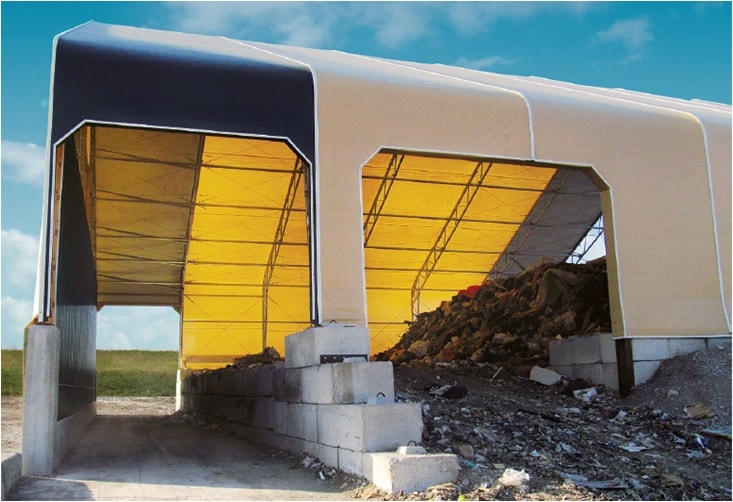Unique Requirements for Waste Transfer Stations that Fabric Buildings Can Solve
by Admin | Jun 25, 2020

According to the United States Environmental Protection Agency, waste transfer stations play an important role in a community’s total waste management system, serving as the link between a community’s solid waste collection program and a final waste disposal facility. While facility ownership, sizes, and services offered vary significantly among transfer stations, they all serve the same basic purpose—consolidating waste from multiple collection vehicles into larger, high-volume transfer stations for more economical shipment to distant disposal sites. In its simplest form, a transfer station is a facility with a designated receiving area where waste collection vehicles discharge their loads.
Economically Viable
To offset the high cost of constructing and maintaining a modern landfill, facility owners construct large facilities that attract high volumes of waste from a greater geographic area. Rural and urban communities alike are finding that the most economically viable solution to their waste disposal needs is shipping their waste to transfer stations. In these circumstances, a transfer station serves as the critical consolidation link in making cost-effective shipments to these distant facilities.
The primary reason for using a transfer station is to reduce the cost of transporting waste to disposal facilities. Consolidating smaller loads from collection vehicles into larger transfer vehicles reduces hauling costs by enabling collection crews to spend less time traveling to and from distant disposal sites and more time collecting waste. This also reduces fuel consumption and collection vehicle maintenance costs, plus produces less overall traffic, air emissions, and road wear.
Public Versus Commercial Use
Some transfer stations provide public access to the facility rather than restricting access only to waste collection vehicles. The types of customers accommodated vary depending on where the facility is located and who owns and operates the transfer station.
Private transfer stations might not be open to the public because residents deliver relatively small amounts of waste with each visit, require more direction for safe and efficient use of the transfer station, and generally pay relatively small fees for using the transfer station.
Publicly operated transfer stations are more likely to be open to public use. The general public usually is allowed to use a transfer station for any of several reasons: waste collection is not universally provided in the area; some wastes, such as bulky items or remodeling debris, are not collected; or public access is part of a strategy to prevent illegal dumping by providing a convenient, cost-effective place for people to deposit waste. Public unloading areas and traffic patterns are usually kept separate from commercial vehicles for safety and efficiency.
Transfer Station Facility Requirements
Transfer buildings have unique requirements rarely found in structures designed for other uses.
Vertical Clearances and Access Doors
The need for vertical clearances to sufficiently accommodate the tipping height of commercial collection vehicles are critical. Facilities should be designed with at least 25 to 30 feet of vertical clearance from the tipping floor to the lowest overhead element.
Calhoun’s internal height clearances can meet nearly any waste transfer station vertical clearance requirement. For example, Calhoun’s VP Series can reach as high as 75-feet tall on larger width structures such as our 250-wide profile. The HT Series can reach as high as 44-feet tall with the 82-foot wide profile.
Enclosed transfer structures also require large, very tall access doors. Doors 24-feet high are not unusual in waste transfer buildings. The design must assume that a collection truck will inadvertently exit the transfer station building with its tipping bed extended.
The doors on Calhoun’s fabric structures can be as big as the frame can take. For example, Calhoun has done many building projects with door opening heights as tall as 35-feet. Alternatively, our structures can be completely or partially open.
Adequate On-Site Space
Internally, waste transfer stations need relatively large, open floor areas suitable for maneuvering large vehicles. Interior building columns and walls may not accommodate the kind of safe traffic movements that are needed, which could pose a hazard and reduce traffic efficiency.
Calhoun’s fabric structures for waste transfer stations can span up to 250 feet wide with zero interior poles, pillars, columns, walls, or other interferences.
Waste transfer stations include more than just the tipping area. The overall building site needs to accommodate the supporting activities and requirements including traffic queuing, buffer zones, and scale facility operations. Thus, busy transfer stations also require adequate external onsite space for vehicle parking and queuing. Queuing trucks on city streets create health and safety issues and can be very disruptive for the surrounding neighborhood.
Custom Foundations
Most transfer stations require some amount of grade separation so waste can be loaded into open-topped vehicles to simplify the waste loading process. Since customer and transfer vehicles both need to access the structure, but at different levels, finding a building that offers this configuration is also critical. Additionally, heavy-duty, skid-resistant floors are a necessity in transfer stations. Sloped floors with positive drainage are also important.
Calhoun’s fabric buildings are modeled to not only consider the engineering of our framework and fabric, but the behavior of the mount style right down to any necessary footings. We look at the full package, and model the foundation even if we aren’t designing it. Calhoun thoroughly designs fabric buildings in concert with the overall behaviour of the fabric buildings including different mount styles such as steel legs. Depending on the size of your structure, we can erect our structures on steel legs with heights from 2’ to 14’.
Structural Design Codes
Older waste transfer structures, particularly older warehouse type structures, often fail to meet current structural design codes. In particular, modern seismic and fire code requirements have changed considerably in recent years.
For each and every site-specific analysis, a comprehensive seismic analysis is completed which includes the modal response behavior of the building and the building’s actual fundamental period. This analysis is also used in the wind design to ensure that the period of the structure will not substantially affect the behavior of the structure during a design wind event.
Durable and Reliable for Heavy Use
Transfer station structures can experience substantial vibrations from heavy equipment used to compact and load waste into the transfer vehicles. Concrete and steel floors, pillars, and other building reinforcements must be designed to accommodate these high levels of vibration.
Calhoun’s fabric storage buildings are built using open web trusses, specifically aerating the corners of our welds so the zinc can fully penetrate the steel during the hot dip galvanization process. Aerating the corners of our welds ensures our open web trusses are 100% protected from corrosion, inside and out, and won’t ever corrode or buckle from the inside. Our hot dip galvanized open web trusses result in stronger overall fabric storage buildings compared to other fabric structure companies in the market.
For more information on our Calhoun’s fabric structure for waste transfer stations, contact us. You might also be interested in reading, How to Build a Waste Storage Facility that Provides Odor-Control.

